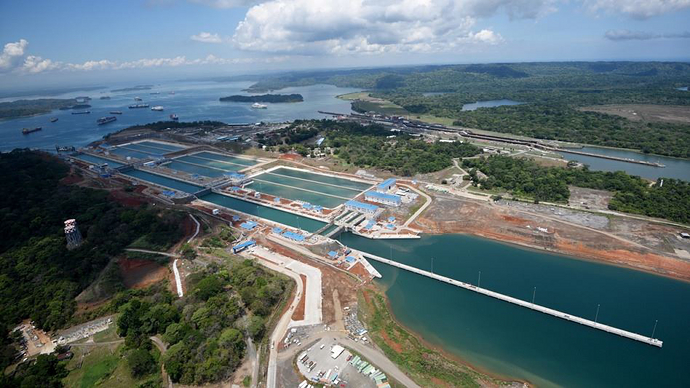The Atlantic Side locks, Agua Clara in the foreground, the old Gatun Locks behind. Wikimedia photo.
Full Neopanamax and Capesize dry bulk ships can’t pass through the canal now
by Eric Jackson
The Panama Canal Authority (ACP) imposed a draft restriction of 47 feet (14.333 meters) in mid-March and plans to impose another more severe limit on April 11. Draft restrictions are about how low in the water a ship’s hull might go, to keep vessels from running aground in the lake or touching the bottom of the locks when water levels in the canal system are low.
For the shipping industry, it means that certain vessels cannot carry full loads through the Panama Canal. Most immediately affected are dry bulk carriers, in particular the larger ones like those carrying Brazilian soybeans to Asian ports. A Neopanamax-sized (with the largest dimensions that fit through the new locks) grain ship will take a draft of 15 meters when fully loaded. A full Capesize dry bulk ship takes a 20-meter draft. In the matrix of business calculations it must be decided whether to send partially loaded ships through the Panama Canal, keep soybeans and grain in silos until the rains come and replenish the PanCanal watershed and the merchandise may be more efficiently shipped, or to send grain to other destinations or by other routes.
According to the ACP, in 69 years of total watershed monitoring we had the second-driest December on record in 2018.
Correction, while Gatun Lake’s level is low and getting lower, and how low it is can be cast in relative terms given the day of the year and the raising of the lake’s usual level for the canal expansion, a statement attributed to the ACP about Gatun Lake levels being the lowest in 100 years is inaccurate. At the end of the last El Niño phenomenon in 2015-2016 they were lower.
These links are interactive — click on the boxes













